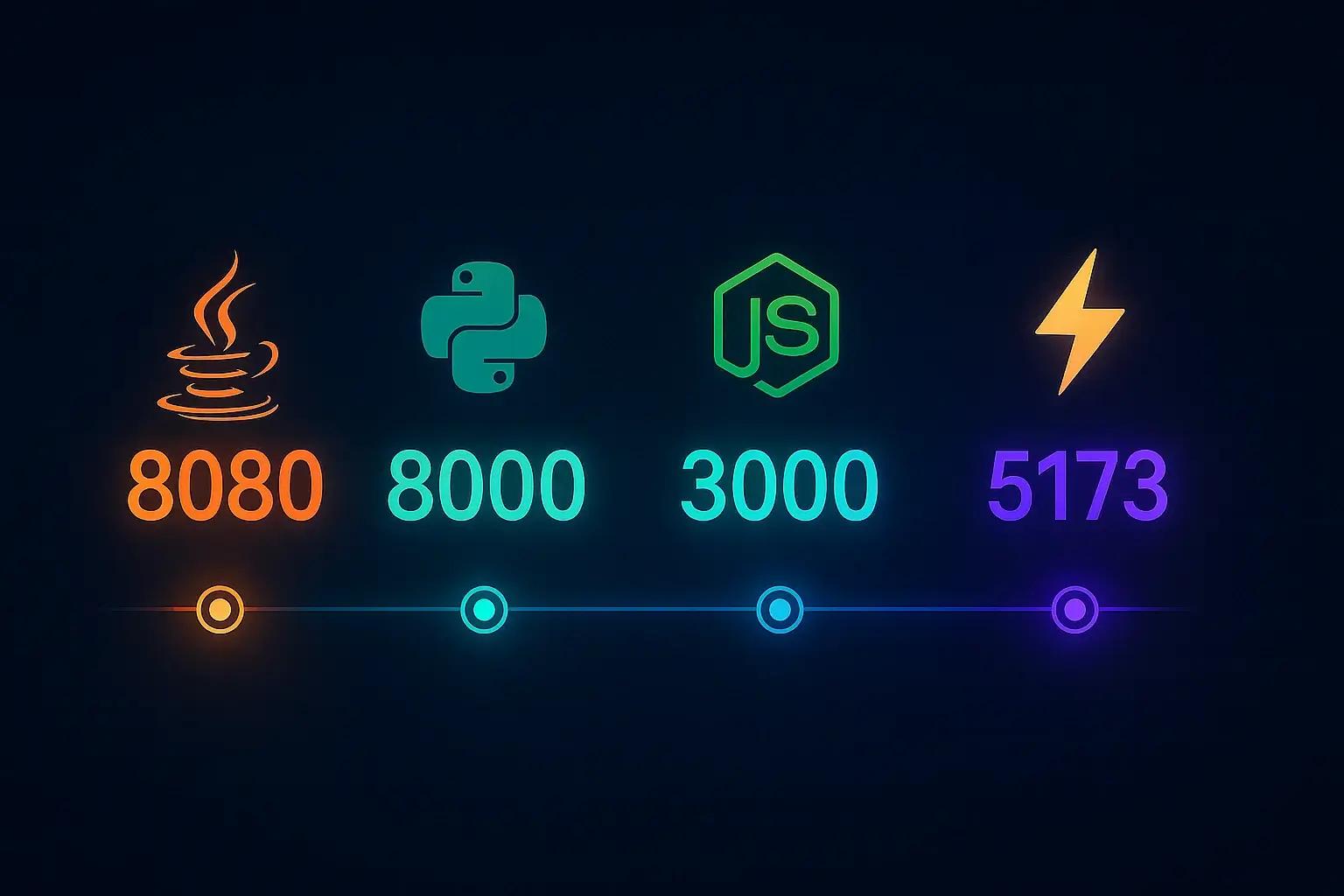The Port Timeline: Why Dev Servers Use 3000, 8000, 8080, and 5173
Shubham
Developer

Ever wondered why your dev server always runs on localhost:3000 or 8080?
I used to think it was random until I realized these port numbers actually tell a story.
A story of how programming evolved, one port at a time.
8080: The Java Era
It all started in the 1990s, when Java ruled the backend world.
Port 80 was (and still is) the default for HTTP servers. But there was one problem... using port 80 required admin privileges. So, developers needed an alternative that was both memorable and easy to configure.
Their clever solution? Just double it.
80 × 2 = 8080.
Soon, Java servers like Tomcat and later Spring Boot adopted 8080 as their default port.
It became the unofficial standard for Java-based web servers... a small workaround that turned into a global convention.
8000: Python’s Simplicity
Fast forward to the early 2000s.
Python was growing fast, and developers wanted a simple way to serve files locally.
The command python -m SimpleHTTPServer (later python3 -m http.server) used port 8000 by default.
Why 8000?
Because it was a “safe” port — above 1024 (no admin rights needed), easy to remember, and usually free.
Frameworks like Django carried this forward, and soon every Python developer was spinning up localhost:8000.
It wasn’t about being special — it was about keeping things simple.
3000: The Node.js Revolution
Then came the 2010s. The age of JavaScript everywhere.
When Node.js and Express started gaining traction, developers needed an example port for their tutorials. Someone used app.listen(3000) and that was it.
No special reason. No big logic. Just a clean, round number that worked.
But because early Express documentation and YouTube tutorials used 3000, it spread like wildfire.
Soon, frameworks like React, Next.js, and SvelteKit adopted it too.
By the mid-2010s, localhost:3000 had become the face of modern web development... fast, simple, and familiar.
5173: The Vite Generation
Now, let’s jump to the 2020s... the age of speed.
When Vite was introduced, it needed a default port. Instead of picking something random, Evan You (the creator) chose 5173.
The reason is actually clever — 51 stands for “VI” and 73 for “TE.”
Together, they form VITE.
It’s a small Easter egg, but it perfectly reflects Vite’s personality — modern, fun, and developer-friendly.
Just like how Java had 8080 and Node had 3000, Vite carved its own identity with 5173.
Bonus: Ollama - The AI Era (Port 11434)
Now, let’s talk about something from the present — AI development.
If you’ve been experimenting with Ollama, you might’ve noticed it runs on port 11434 by default. That’s not a random pick either. it’s part of Ollama’s identity.
The number 11434 visually spells out the word “LLAMA” if you look closely at the shapes of the digits:
11 → LL, 4 → A, 3 → M, 4 → A.
It’s a clever nod to the LLaMA model family that inspired Ollama’s name, and it fits perfectly with its goal, making AI models run locally, right on your machine.
So, if the earlier ports tell the story of web development… 11434 marks the beginning of the AI development era, where your local server isn’t just running code anymore, it’s running intelligence.
What These Ports Really Represent
When you look closer, these aren’t just port numbers — they’re chapters in developer history.
- 8080 → Java’s clever workaround for port 80
- 8000 → Python’s simplicity and accessibility
- 3000 → Node.js and modern web culture
- 5173 → Vite’s creative new era
- 11434 → Ollama AI development era
Technically, you can use any port between 1024 and 49151, but these ones became icons.
In the End
Every time you run npm run dev or python manage.py runserver,
you’re not just starting a local server… you’re following decades of developer tradition.
From enterprise Java servers to blazing-fast frontend tools these ports quietly tell the story of how web development evolved.